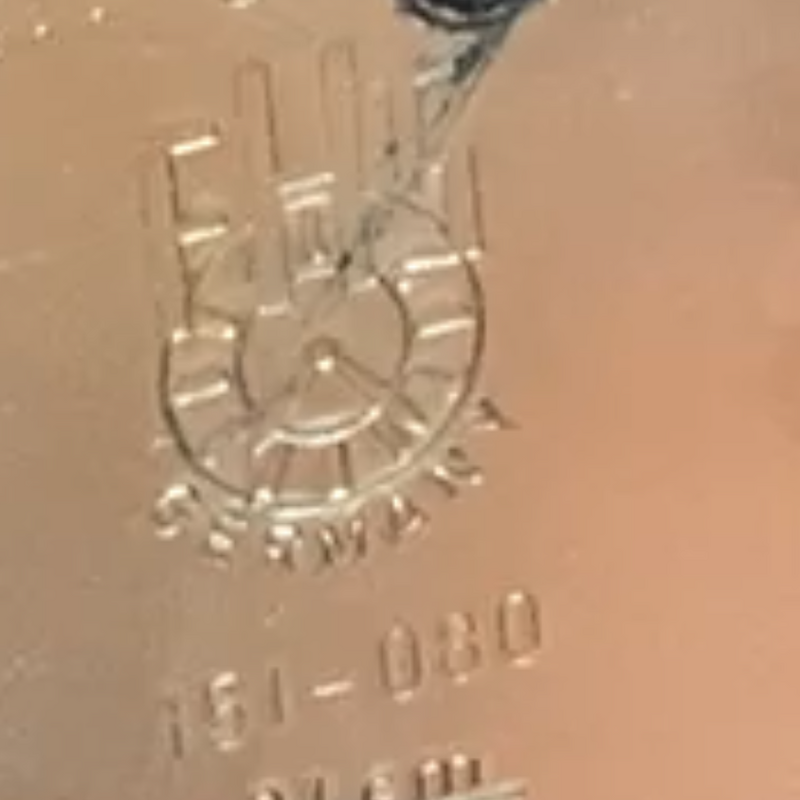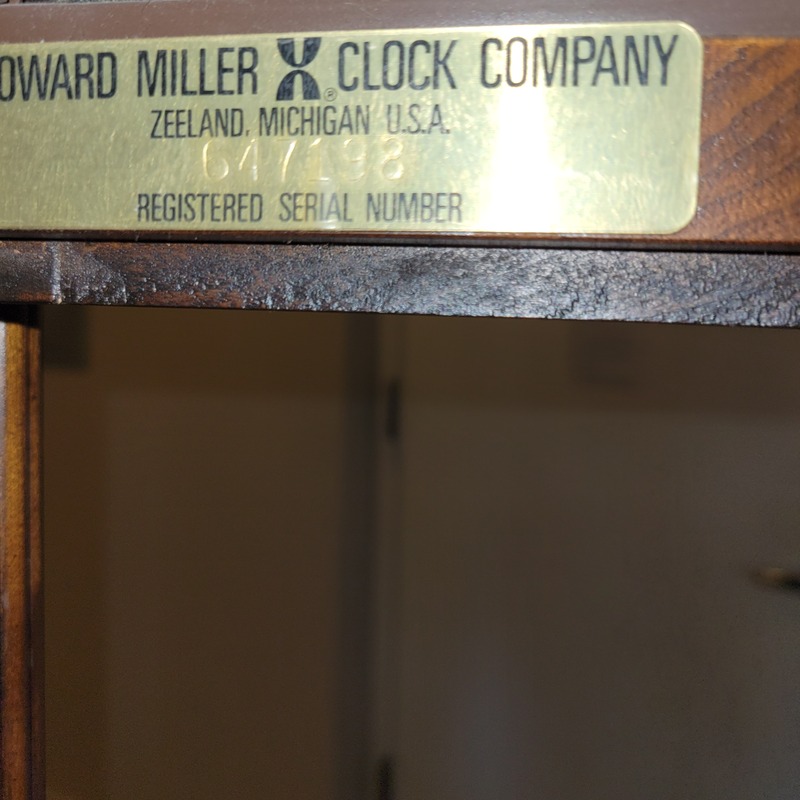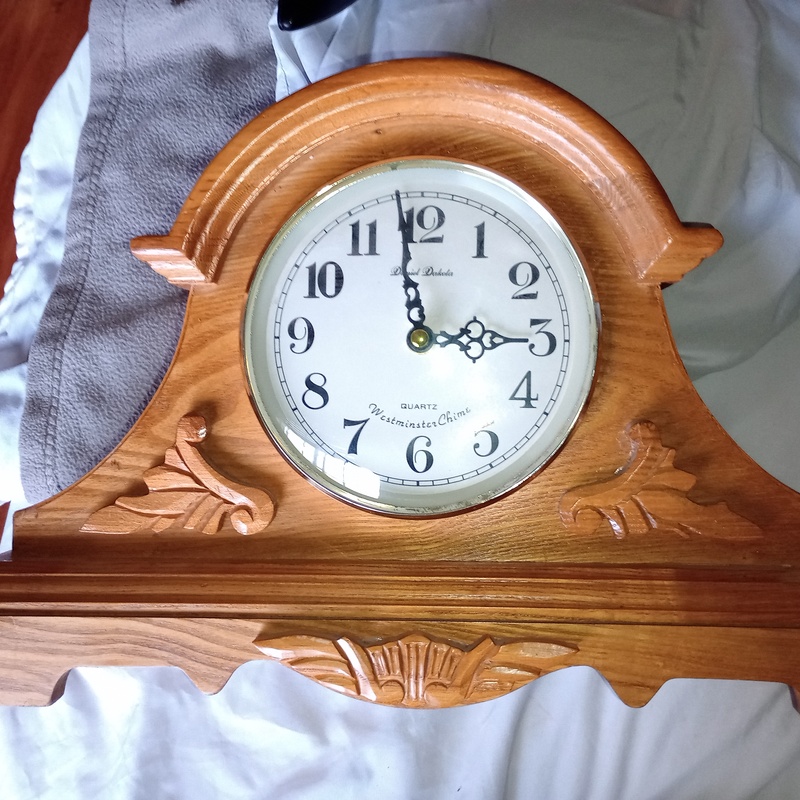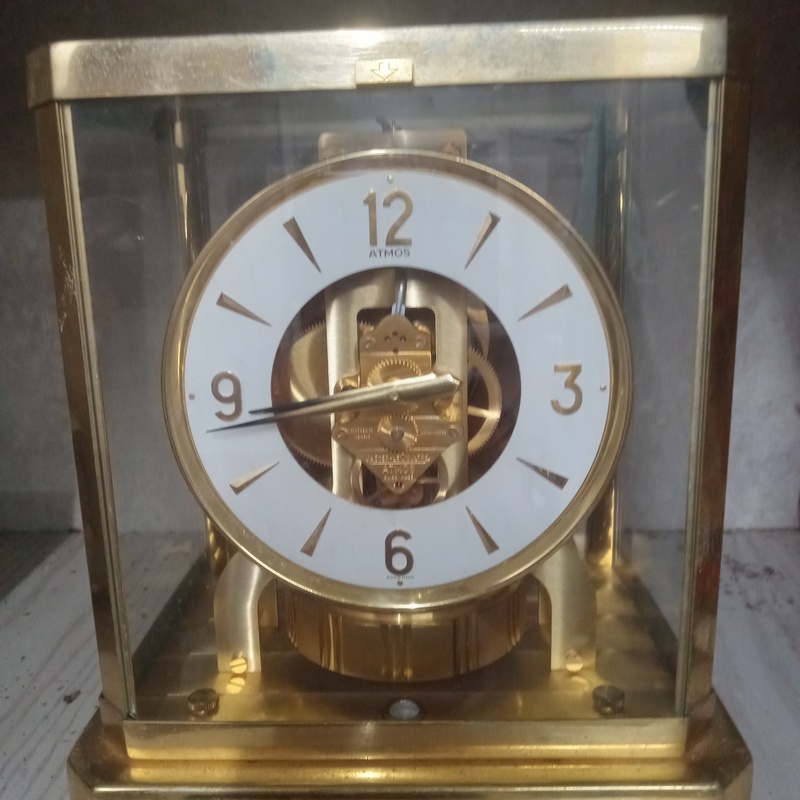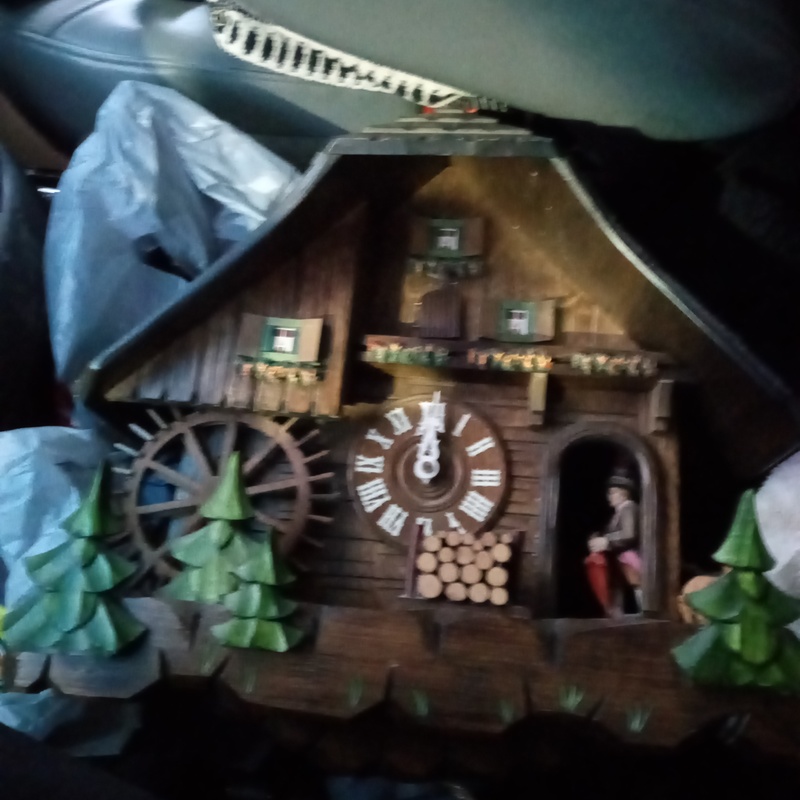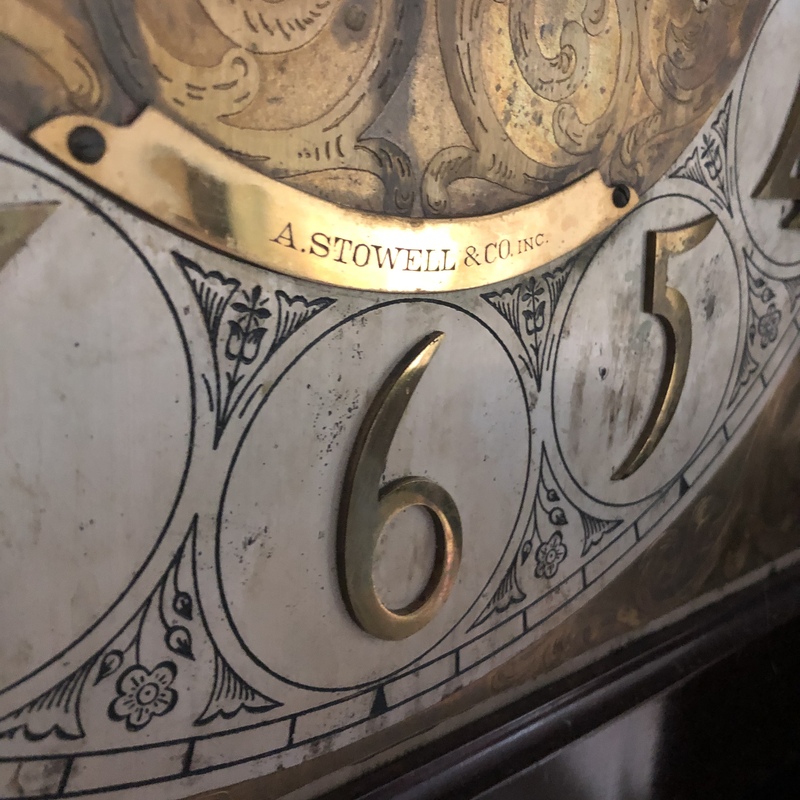









Late 1800s grand father clock From Germany
A .STOWELL & CO. INC.
Inherited
Auction House
Yes


Hi Trevor,
Thank you for sending in this handsome hall clock to mearto.com for an appraisal. I shall try to be of assistance to you today.
TITLE:
Mahogany, two weight, three tubular bells, eight day time and quarterly chiming Hall clock (name for the modern grandfather clock), imported German made movement and German made case, retailed by Alexander Stowell & Co. Inc., Boston, circa 1920-1930s.
DESCRIPTION:
CASE – Height of the case not known – This is a solid mahogany Hall clock with a full rounded, break-arch, concave-molded pediment (called break-arch because the arch is broken by the right angles of the shoulders at the sides of the pediment). The undecorated mahogany tympanum has an arched cornice above the full length glazed dial door. The door is divided into two sections: the smaller glass overlies the arched dial while the longer rectilinear glass allows one to view the descent of the two weights and the arc of the pendulum as it swings inside the case. The sides of the hood have rectilinear mahogany skeletonized fretwork with cloth backing to allow the chimes to be emitted with greater ease from inside the case. The case door is flanked by two flat solid mahogany pilasters. There is a very narrow horizontally placed stepped base resting on square mahogany block feet. Many of these mahogany cases were made by American furniture companies, e.g. Colonial of Zeeland Michigan or Herschede of Cincinnati and
housed English and German movements. However, when we get into the Art Deco years of the 1920s and 30s the entire clock including the case was often made in Germany and shipped directly to the retailer. This case construction suggest German origin to me. . .
DIAL – This is a single-piece, brass arched dial with applied brass Arabic hours in round cartouche form with foliate half hour markers between each cartouche, closed minute ring to the outside. The dial center and the four corner spandrels have gilt filigree designs in the rococo style with foliate forms and large ‘C’ scrolls. There are two winding aperture for the weights, steel skeletonized Chippendale-style hands and a plaque over the six for the retailer, ‘A. Stowell & Co. Inc.’ In the lunette (above) is a revolving moon dial with two engraved northern hemispheres (one for the eastern hemisphere and one for the western). Between the two hemispheres is a cloudy logo that resembles a sunburst or crown, the photos not being of high enough resolution for me to be sure. . .
MOVEMENT - A heavy solid rectangular brass plate movement, marked “Made in Germany”, brass tubular pillars connect the plates which are secured with screws at the rear plate. There is an anchor escapement, steel cut pinions, steel arbors and brass gearing, grooved winding drums for the weight cord and the seconds pendulum is suspended from the rear of the back plate and has a large polished brass bob at the bottom of the rod. This particular movement apparently was made with three silvered brass tubular bell chimes suggesting a later date than 1920. During the height of the Hall clock craze in America (1900-1915) the smallest size was five tubes, but in the ensuing years between the World Wars less tubes were used. One has to assume the dial, like the movement, was also made in Germany for export to America. . .
CONDITION – The Hall clock case has very simple lines and this style of case had already lost a good deal of its ornamentation originally seen at the start of the century. This was typical of Hall clock cases made post World War I. The case is in very good condition for its age. The movement is a finely made German product and German clockmakers between the two World Wars could produce a finer movement at a lower price than their America and English counterparts.
The real condition issue with this clock is the dial. It is apparent that there has been a good deal of oxidation of the silver used in making the alloy dial and it is now well on its way to turning a blackish brown in many areas where the silver and other metals are oxidizing from contact with the air. In addition, the filigree work on the dial was very thin and a good deal of it is quite worn and not sharply defined (at least in these photos). The presence of three tubes will lower the price when people who are interested in buying such pieces look for 5, 7, 9 or 12 tube examples, i.e. those made earlier. Still this is a well-constructed case and movement and I am certain it can keep excellent time.
HISTORICAL:
Alexander Stowell, Boston, MA 1849-1855 and 1862-1895 and Charlestown, MA 1855-1860
Jeweler. Formed A. Stowell & Co. in 1865.
A. Stowell & Co. (1865-1981), Boston, MA. Jewelers, founded by Alexander Stowell. . .
When comparing this case and clock to others with tubular chimes selling at auction in the past couple of years I have concluded that this clock, in its current condition would bring no more than $500-$700. Retail prices, of course would be a good deal higher.
I hope this has been helpful to your understanding of the clock.
My best,
David

